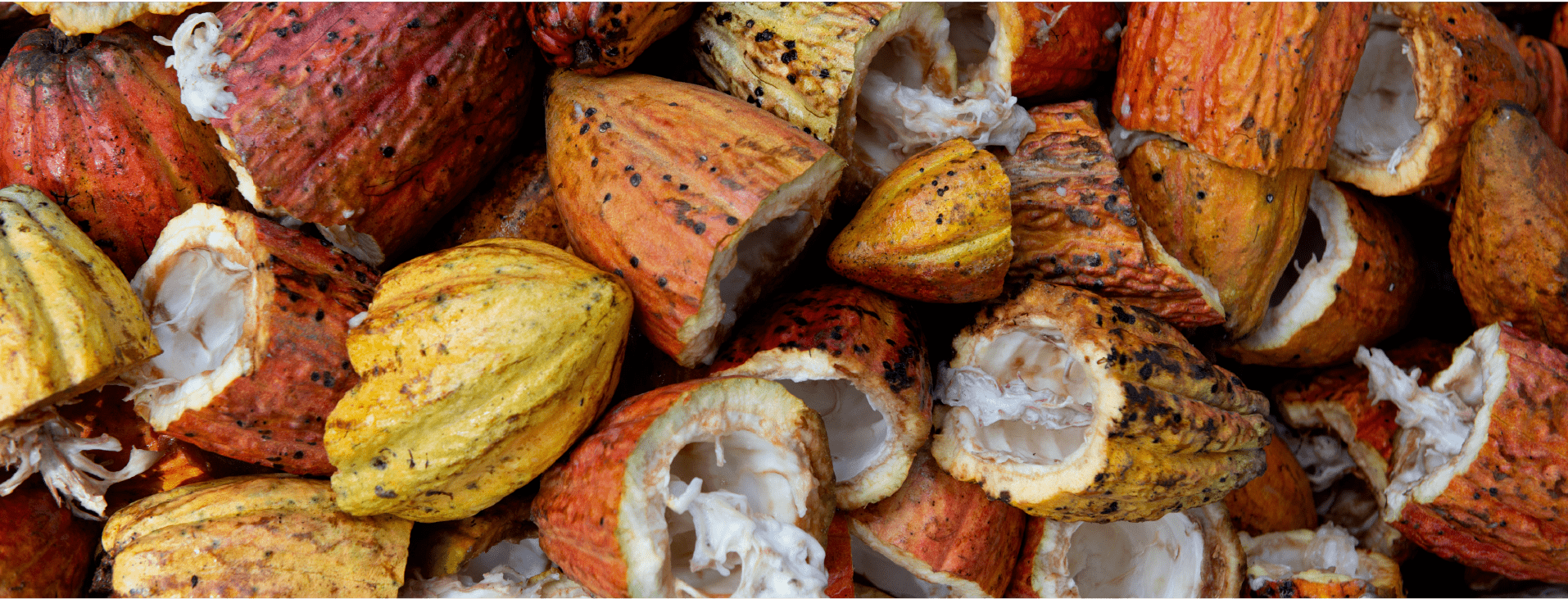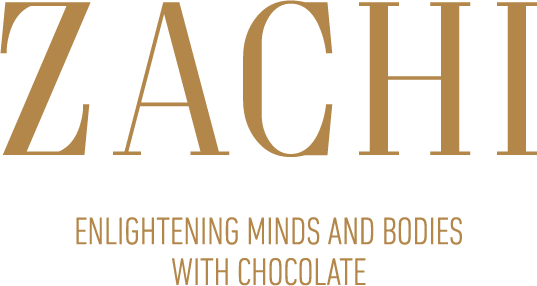ORIGIN OF CACAO
An archaeological discovery in the southeast of Ecuador revealed that Cacao is from the Amazon region, and not from Central America (as previously thought) and was already being consumed by native tribes more than 5,000 years ago (3,300 B.C.).
In the province of Zamora Chinchipe, in Ecuador´s Amazon region, a group of French and Ecuadorian archaeologists found chemical and physical traces of cacao of the “fine aroma” variety in the vestiges of the bottles that were used by a major culture called Mayo Chinchipe-Marañon. The bottles that were discovered have a unique stirrup spout and the base typically had a human effigy decoration.
This research shows that cacao was domesticated in the upper Amazon region, and eventually made its way from there to Central America.
Its social use dates back more than 7,000 years, according to carbon-14 testing of the vestiges from the Mayo Chinchipe-Marañón culture, discovered in 2002 in that area. This culture had sophisticated organization and apparently traded their regional products with cultures in the Andes and on the Coast of Ecuador.

MAYO CHINCHIPE CULTURE
The Mayo Chinchipe-Marañón culture is known as the oldest of the western Amazon region, with “features of complex social sophistication” and different forms of social hierarchies.
Among the vestiges found in the region, stonework art and human effigy stirrup spout bottles seem to have characterized this culture’s material expressions. Its material culture includes highly developed stonework, fine-quality single-toned pottery, and the use of exotic materials (turquoise, stone crystals and shells from the sea).

Further, both the pottery and stone recipients contain offerings of food, likely to provide sustenance in the next life. Specialist analyses of these containers have identified microscopic grains of cornstarch, manioc, yams, taro, hot pepper and cacao. The ceramic bottles contained beverages made of corn (such as present-day corn beer – chicha) and of cacao.
Ecuador played a key role in introducing chocolate to the West. The love affair with chocolate started much later – in the 16th Century, when Aztec ruler Montezuma introduced Spanish conquistador Hernan Cortes to a spicy chocolate drink, known as “xocoatl”. When sugar was added to the mix, the drink became a fad in Europe, and cacao became much sought after.
ENLIGHTENING INGREDIENTS
From the most remote antiquity we can highlight the use of different types of herbs, fruits, and vegetables, due to the medicinal and nutritional properties that is intrinsic to them. But it is not something that belongs to the past or that it only serves as inspiration. In fact, some plant species have such beneficial effects and are so nutritious that we are lucky to have them available for consumption today. ZACHI’s Enlightening Ingredients include: Fine Aroma Ecuadorian Cacao, Lemon Balm (Melissa), Ground Vanilla, and Andean Blueberries.
Fine Aroma Ecuadorian Cacao
Ecuador was considered the world´s largest producer and exporter of cacao until the beginning of the 20th century, losing its top spot in the early 1900s after a plant disease and the raise of new cultivations across Africa and Asia.
West Africa became the world´s leader in cacao production with a focus on ordinary bulk or conventional beans used for processed chocolate flavored candies and sweets.
Barely 5% of cacao produced in the world is given the prestigious label of ¨Fine Aroma¨. Ecuador produces more than 63% of all Fine Aroma Cacao worldwide. So, Ecuador is the largest producer of Fine Aroma Cacao in the world.
Ecuador´s native cacao beans are known as ¨Nacional¨ or ¨Arriba¨. The Arriba name derives from a 19th century legend about a Swiss chocolatier who went to Ecuador in search of the best cacao. While venturing on the Guayas River, he was struck by a strong aromatic scent which prompted him to ask some nearby natives, who were in the process of unloading cacao from their canoes, where the aroma was coming from. They responded, “de río arriba” which means “from up the river”. From that day forward this variety of cacao has been christened “Arriba”.
Much like wine, chocolate reflects the flavors of the region where cacao beans are grown, and how they are dried and fermented. Ecuador’s cacao is more complex because Arriba beans vary hugely in taste and size according to the area in which they are grown.
Ecuadorian Arriba Cacao is known for its aroma and unique flavor. Its quality is due to the country’s rich diversity in terrain and equatorial location on the equator.
Ecuador has become the favorite destination for the world’s great chocolatiers in search of the finest beans to create the top premium dark chocolates, and cacao production has become a sustainable source of income for local farmers.
In countries like Belgium, the Codex Alimentarius (International Food Standards) states that a Premium Chocolate must contain at least 12% of Fine Aroma Ecuadorian Cacao in its formula.
OUR COMMITMENT



Enlightening Minds and Bodies with Chocolate

REFERENCES
1. Mayo Chinchipe – Marañón archaeological landscape – UNESCO World Heritage Centre
2. El origen del cacao estaría en la selva – Ministerio de Cultura y Patrimonio
3. Is Ecuador home to the world’s best chocolate? – BBC News
4. https://www.verywellhealth.com/the-health-benefits-of-lemon-balm-89388
5. vanilla | Facts, Description, & Cultivation | Britannica
6. SINCE THE AZTECS DISCOVERED THE VANILLA BEAN, THERE`S BEEN NO – Chicago Tribune
7.https://www.prohealth.com/library/why-vanilla-beans-are-absolutely-worth-it-46016
8.Characterizing the genetic diversity of the Andean blueberry (Vaccinium floribundum Kunth.) across the Ecuadorian Highlands | bioRxiv
9. El mortiño, un tesoro andino | Recetas de Ecuador (cocina-ecuatoriana.com)

